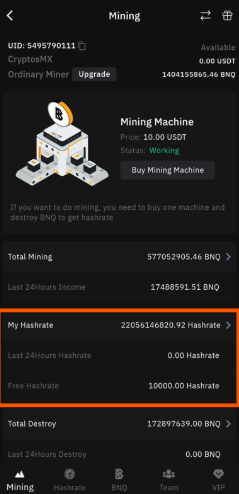What Is The Hashrate In Mining?
币界王财神
Updated at: 4 months ago
What Is The Hashrate In Mining?
Hashrate refers to the computational power used for mining to solve complex mathematical equations required to validate and secure blockchain transactions. Measured in hashes per second (H/s), it represents the efficiency and performance of mining equipment. Higher Hashrates indicate faster and more efficient mining processes, enhancing a network’s security and overall performance.
How Hashrate Works In Mining
In mining, Hashrate determines how quickly a system can process the cryptographic calculations needed to create new blocks and confirm transactions. For instance, if a network requires solving a cryptographic puzzle to validate a block, the Hashrate of connected miners collectively influences how quickly the solution is found.
The Role Of Hashrate In Blockchain Security
A higher Hashrate strengthens blockchain security by making it harder for malicious actors to compromise the network. With increased computational power, executing attacks becomes exceedingly difficult. The hash power deters tampering and ensures the integrity of transaction records.

Hashrate In BNQ Mining
In BNQ’s unique Proof-of-Work (POW) and Proof-of-Contribution (POC) models, Hashrate plays a pivotal role. Users burn BNQ tokens to gain Hashrate, which directly correlates to mining rewards. For instance, burning 0.5 BNQ tokens equates to gaining one unit of POC Hashrate. This mechanism ensures fair distribution of rewards and encourages ecosystem participation.
Practical Applications Of Hashrate
Hashrate is crucial in mining profitability calculations, aiding miners in selecting optimal strategies. For platforms like BNQ, Hashrate integrates economic incentives with deflationary principles, boosting token value while maintaining mining efficiency.